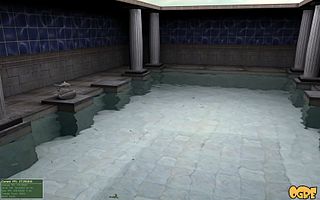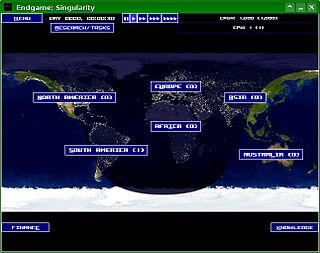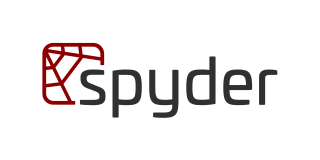The topic of this article may not meet Wikipedia's general notability guideline .(January 2018) |
The topic of this article may not meet Wikipedia's general notability guideline .(January 2018) |
For scientific plotting applications, Gist is a scientific graphics library written in C by David H. Munro of Lawrence Livermore National Laboratory. [1] [2] [3] It supports three graphics output devices: X Window, PostScript, and Computer Graphics Metafiles (CGM). The library is promoted as being small (written directly to Xlib), efficient, and full featured. Portability is restricted to systems running X Window (essentially, the Unix world).
There is a Python port of Gist called PyGist; [4] it is used as one of several optional graphics front ends of the scientific library SciPy. PyGist is also ported to Mac OS and Microsoft Windows. [5]

NumPy is a library for the Python programming language, adding support for large, multi-dimensional arrays and matrices, along with a large collection of high-level mathematical functions to operate on these arrays. The predecessor of NumPy, Numeric, was originally created by Jim Hugunin with contributions from several other developers. In 2005, Travis Oliphant created NumPy by incorporating features of the competing Numarray into Numeric, with extensive modifications. NumPy is open-source software and has many contributors. NumPy is a NumFOCUS fiscally sponsored project.

IRAF is a collection of software written at the National Optical Astronomy Observatory (NOAO) geared towards the reduction of astronomical images and spectra in pixel array form. This is primarily data taken from imaging array detectors such as CCDs. It is available for all major operating systems for mainframes and desktop computers. IRAF was designed cross-platform, supporting VMS and UNIX-like operating systems. Use on Microsoft Windows was made possible by Cygwin in earlier versions, and can be today done with the Windows Subsystem for Linux. Today, it is primarily used on macOS and Linux.

PyGTK is a set of Python wrappers for the GTK graphical user interface library. PyGTK is free software and licensed under the LGPL. It is analogous to PyQt/PySide and wxPython, the Python wrappers for Qt and wxWidgets, respectively. Its original author is GNOME developer James Henstridge. There are six people in the core development team, with various other people who have submitted patches and bug reports. PyGTK has been selected as the environment of choice for applications running on One Laptop Per Child systems.
Psyco is an unmaintained specializing just-in-time compiler for pre-2.7 Python originally developed by Armin Rigo and further maintained and developed by Christian Tismer. Development ceased in December, 2011.

The GNU Data Language (GDL) is a free alternative to IDL, achieving full compatibility with IDL 7 and partial compatibility with IDL 8. Together with its library routines, GDL is developed to serve as a tool for data analysis and visualization in such disciplines as astronomy, geosciences, and medical imaging. GDL is licensed under the GPL. Other open-source numerical data analysis tools similar to GDL include Julia, Jupyter Notebook, GNU Octave, NCAR Command Language (NCL), Perl Data Language (PDL), R, Scilab, SciPy, and Yorick.
CPython is the reference implementation of the Python programming language. Written in C and Python, CPython is the default and most widely used implementation of the Python language.
CherryPy is an object-oriented web application framework using the Python programming language. It is designed for rapid development of web applications by wrapping the HTTP protocol but stays at a low level and does not offer much more than what is defined in RFC 7231.

PyMOL is an open source but proprietary molecular visualization system created by Warren Lyford DeLano. It was commercialized initially by DeLano Scientific LLC, which was a private software company dedicated to creating useful tools that become universally accessible to scientific and educational communities. It is currently commercialized by Schrödinger, Inc. As the original software license was a permissive licence, they were able to remove it; new versions are no longer released under the Python license, but under a custom license, and some of the source code is no longer released. PyMOL can produce high-quality 3D images of small molecules and biological macromolecules, such as proteins. According to the original author, by 2009, almost a quarter of all published images of 3D protein structures in the scientific literature were made using PyMOL.
In the field of computer network administration, pcap is an application programming interface (API) for capturing network traffic. While the name is an abbreviation of packet capture, that is not the API's proper name. Unix-like systems implement pcap in the libpcap library; for Windows, there is a port of libpcap named WinPcap that is no longer supported or developed, and a port named Npcap for Windows 7 and later that is still supported.

PyPy is an implementation of the Python programming language. PyPy often runs faster than the standard implementation CPython because PyPy uses a just-in-time compiler. Most Python code runs well on PyPy except for code that depends on CPython extensions, which either does not work or incurs some overhead when run in PyPy. Internally, PyPy uses a technique known as meta-tracing, which transforms an interpreter into a tracing just-in-time compiler. Since interpreters are usually easier to write than compilers, but run slower, this technique can make it easier to produce efficient implementations of programming languages. PyPy's meta-tracing toolchain is called RPython.

Python-Ogre is a Python binding for the OGRE 3D engine, designed to provide the functionality and performance of OGRE with the accessibility and ease of use of Python to facilitate the rapid development of 3D games and to make the OGRE engine more accessible to the beginner, who might otherwise be daunted by the technicalities of writing in the native C++. The performance of the engine is decreased in comparison to the original C++ demos, however the original OGRE engine provides such high performance that the performance of Python-Ogre is still more than acceptable for all but the most graphics-intensive games.

The Ren'Py Visual Novel Engine is a free software game engine which facilitates the creation of visual novels. Ren'Py is a portmanteau of ren'ai (恋愛), the Japanese word for 'romantic love', a common element of games made using Ren'Py; and Python, the programming language that Ren'Py runs on.

Cython is a programming language, a superset of the Python programming language, designed to give C-like performance with code that is written mostly in Python with optional additional C-inspired syntax.

PySide is a Python binding of the cross-platform GUI toolkit Qt developed by The Qt Company, as part of the Qt for Python project. It is one of the alternatives to the standard library package Tkinter. Like Qt, PySide is free software. PySide supports Linux/X11, macOS, and Microsoft Windows. The project can also be cross compiled to embedded systems like Raspberry Pi, and Android devices.

Endgame: Singularity is a free and open source science fiction strategy/simulation game for Linux, Microsoft Windows, and Mac OS X. It was first released in 2005, with version 1.00 released in 2020.

Spyder is an open-source cross-platform integrated development environment (IDE) for scientific programming in the Python language. Spyder integrates with a number of prominent packages in the scientific Python stack, including NumPy, SciPy, Matplotlib, pandas, IPython, SymPy and Cython, as well as other open-source software. It is released under the MIT license.

Zim is a graphical text editor designed to maintain a collection of locally stored wiki-pages, a personal wiki. Each wiki-page can contain things like text with simple formatting, links to other pages, attachments, and images. Additional plugins, such as an equation editor and spell-checker, are also available. The wiki-pages are stored in a folder structure in plain text files with wiki formatting. Zim can be used with the Getting Things Done method.